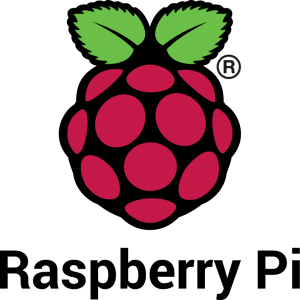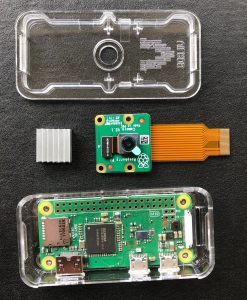 Raspberry Pis are a key smart technology at the heart of the Internet of Things (IoT) and are central to the design of our future smart cities. At the Open University, there is interest in the way smart technologies can help build and manage the world we live in, and in their role in helping authorities and citizens to make informed decisions across energy, transport, water, waste, citizen participation and so on. Important to research is the role of the IoT and the rapidly evolving range of microprocessors and sensors that can be deployed to monitor events and inform city authorities. This potential is explored at the OU’s Knowledge Makers workshops.
Raspberry Pis are a key smart technology at the heart of the Internet of Things (IoT) and are central to the design of our future smart cities. At the Open University, there is interest in the way smart technologies can help build and manage the world we live in, and in their role in helping authorities and citizens to make informed decisions across energy, transport, water, waste, citizen participation and so on. Important to research is the role of the IoT and the rapidly evolving range of microprocessors and sensors that can be deployed to monitor events and inform city authorities. This potential is explored at the OU’s Knowledge Makers workshops.
To get started with Raspberry Pi, I spoke with Dr Stephen Hallett, Associate Professor of Environmental Informatics at Cranfield University.
First, what is the IoT?
Dr Hallett explained “The IoT concerns the flow of data originating from a myriad of sensor platforms, and its subsequent conversion into information and ultimately to derived knowledge, typically through statistical techniques, such as machine learning and artificial intelligence (AI). Where data becomes held centrally, often in cloud data repositories, it must first originate across computer networks from multiple inexpensive microprocessors with connected sensors, designed to detect a range of phenomena. These can include applications as diverse as, for example, the monitoring of environmental conditions, BIM automation, traffic flows, energy consumption, people movement, vehicle location and the status of installed facilities and services.”
So how do Raspberry Pi microcomputers relate to the IoT?
Dr Hallett clarified the relationship “The related data being captured out on the periphery of IoT computer networks will often require a degree of processing before the derived information is subsequently passed to a central location. The idea of ‘edge computing’ has arisen to describe such situations, where small and inexpensive computers and sensors are used to perform some prescribed function, together with related data processing on the ‘edge’ of the network. In order to achieve this, a new generation of powerful microcomputers have been developed- Raspberry Pis being one example”.

Quick intro to Raspberry Pi
One of the great British success stories is the design and development of the Raspberry Pi microcomputers by the company Raspberry Pi, based in Cambridge, UK (https://www.raspberrypi.org).
Originally developed as an inexpensive teaching tool with which to teach computer science in schools, colleges and universities, the Raspberry Pi has since become widely used in the workplace to build today’s IoT applications, including edge computing applications.
Getting started
The Raspberry Pi is designed to run the open source Debian Linux operating system. The Raspberry Pi company provides a family of increasingly powerful Pi models, which permit sophisticated localised processing of data, for example with contemporary programming languages, such as Python (https://www.python.org).
There are some key advantages
- The Raspberry Pi has the ability to connect easily with a wide range of Digital and Analogue devices, such as sensors and actuators.
- It offers relatively low cost kits with widely available parts, costing approximately £60. Computing power is good despite low costs, for example, a Raspberry Pi B+ mode has a 1.4GHz 64-bit quad-core processor, dual-band wireless LAN, Bluetooth 4.2/BLE, and fast Ethernet.
There are a wide range of teaching materials available on the Internet for learning how to use Raspberry Pi’s for building computer and IoT applications. For example, have a look at the GeoThread blog (www.geothread.net), which describes a whole range of informatics and computer science applications using the Raspberry Pi and other microprocessors.
More Information
To learn about setting up and running Raspberry Pi devices, the following tutorials will prove of interest:
Unboxing the Raspberry Pi 3 – Pi Society
http://www.geothread.net/unboxing-the-raspberry-pi-3-pi-society
Raspberry Pi 3: Hello World – Pi Society
http://www.geothread.net/raspberry-pi-3-hello-world
Raspberry Pi 3: Operating LEDs – Pi Society
http://www.geothread.net/raspberry-pi-3-operating-leds-pi-society
Making the Raspberry Pi work, the next steps – Pi Society
http://www.geothread.net/making-the-raspberry-pi-work-the-next-steps

Leave a Reply